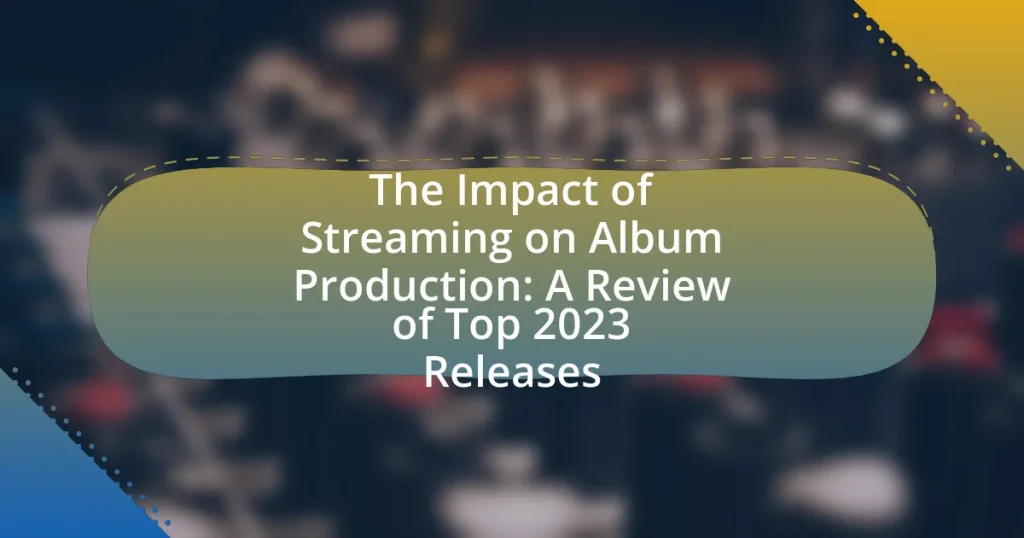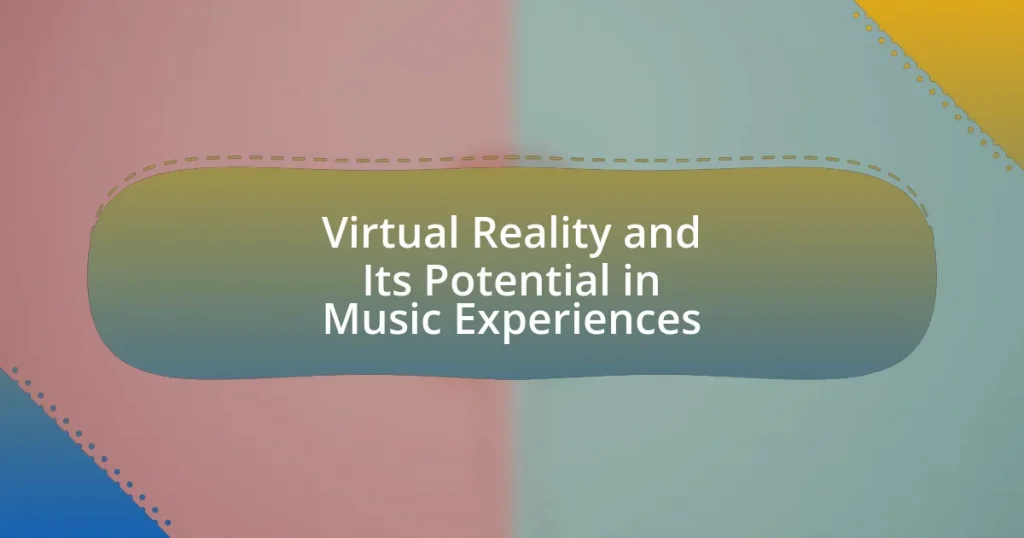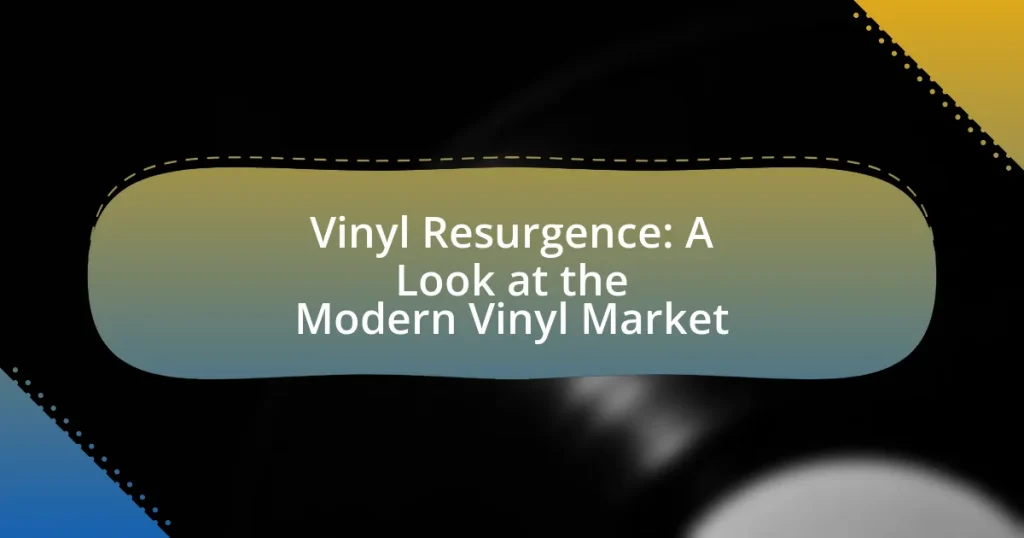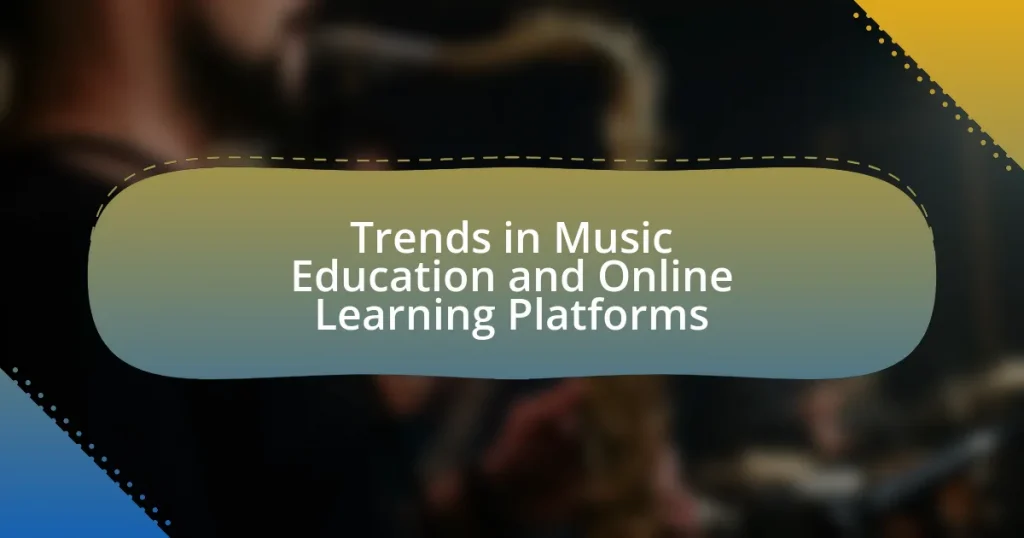The article examines the impact of streaming on album production, highlighting how platforms like Spotify and Apple Music have shifted the focus from full albums to single releases. It discusses the strategic changes artists and producers are making in response to streaming trends, including the use of data analytics to inform creative decisions and the rise of shorter album formats. Key trends for 2023, such as increased collaboration and the integration of AI tools, are also explored, alongside the challenges artists face in adapting to the streaming landscape. The article concludes by analyzing the performance of top album releases in 2023 and the implications for future music production strategies.
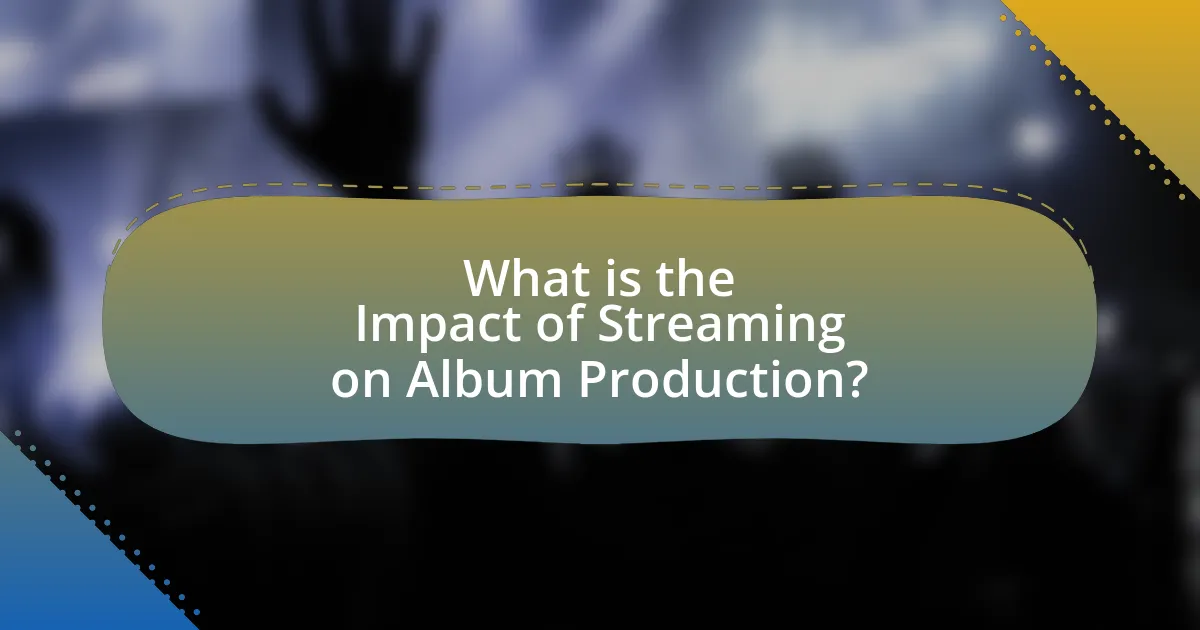
What is the Impact of Streaming on Album Production?
Streaming has significantly altered album production by prioritizing single releases over full albums, leading artists to focus on creating more commercially viable tracks. This shift is evidenced by the rise of platforms like Spotify and Apple Music, which emphasize playlists and individual songs, resulting in a trend where artists often release fewer albums but more singles to maintain listener engagement and maximize streaming revenue. According to a 2022 report by the International Federation of the Phonographic Industry, 70% of music consumption now occurs through streaming services, highlighting the industry’s pivot towards this model. Consequently, album production has become more strategic, with artists increasingly considering the potential for viral hits rather than traditional album cohesion.
How has streaming changed the way albums are produced?
Streaming has fundamentally altered album production by prioritizing single releases over traditional full-length albums. This shift encourages artists to focus on creating standout tracks that can capture immediate listener attention, as evidenced by the rise of platforms like Spotify, which reported that over 60% of music consumption now occurs through playlists rather than complete albums. Consequently, producers and artists often adopt a more fragmented approach to songwriting, emphasizing catchy hooks and shorter song lengths to align with streaming algorithms that favor frequent, engaging content.
What technological advancements have influenced album production in the streaming era?
Technological advancements such as digital audio workstations (DAWs), cloud-based collaboration tools, and high-quality streaming formats have significantly influenced album production in the streaming era. DAWs like Ableton Live and Pro Tools enable artists to produce music more efficiently and with greater creative flexibility, allowing for intricate sound design and editing capabilities. Cloud-based collaboration tools, such as Splice and Soundtrap, facilitate remote teamwork among artists and producers, enabling them to work together seamlessly regardless of location. Additionally, high-quality streaming formats, including lossless audio options like FLAC and Apple Music’s Spatial Audio, have raised the standards for sound quality, prompting producers to focus on delivering superior audio experiences that meet consumer expectations. These advancements collectively enhance the production process and adapt it to the demands of the streaming landscape.
How do streaming platforms affect the creative process of artists?
Streaming platforms significantly influence the creative process of artists by altering how they produce, distribute, and promote their music. Artists often feel pressured to create more content to maintain visibility and engagement on these platforms, leading to a focus on singles rather than full albums. This shift is supported by data indicating that 70% of music consumption occurs through playlists, which favor shorter, more frequent releases over traditional album formats. Additionally, the algorithms used by streaming services can dictate trends and popular sounds, pushing artists to conform to market demands rather than pursue their unique artistic visions.
Why is understanding this impact important for artists and producers?
Understanding the impact of streaming is crucial for artists and producers because it directly influences their revenue models and creative decisions. Streaming platforms have reshaped how music is consumed, leading to a shift in focus from traditional album sales to single-track releases, which can affect an artist’s overall strategy. For instance, according to the Recording Industry Association of America (RIAA), streaming accounted for 83% of the U.S. music industry’s revenue in 2022, highlighting its dominance. This shift necessitates that artists and producers adapt their production techniques and marketing strategies to maximize visibility and engagement on these platforms.
What challenges do artists face in adapting to streaming trends?
Artists face significant challenges in adapting to streaming trends, primarily due to the shift in revenue models and audience engagement. The transition from physical album sales to streaming services has drastically reduced per-stream payouts, with reports indicating that artists earn as little as $0.003 to $0.005 per stream. This financial strain forces artists to produce more content to maintain income, often compromising artistic quality. Additionally, the algorithms used by streaming platforms prioritize certain genres and popular tracks, making it difficult for niche artists to gain visibility. This reliance on algorithm-driven exposure can lead to a homogenization of music, where unique sounds are overshadowed by mainstream trends. Furthermore, the constant demand for new content can lead to burnout among artists, impacting their creative processes and overall well-being.
How can producers leverage streaming data to enhance album production?
Producers can leverage streaming data to enhance album production by analyzing listener preferences and engagement metrics to inform creative decisions. By examining data such as the most-streamed tracks, listener demographics, and peak listening times, producers can identify trends and tailor their music to better resonate with audiences. For instance, a report from the International Federation of the Phonographic Industry (IFPI) indicates that understanding streaming patterns can lead to more targeted marketing strategies and improved song selection, ultimately increasing an album’s success. This data-driven approach allows producers to create content that aligns with listener interests, thereby enhancing the overall production quality and marketability of the album.
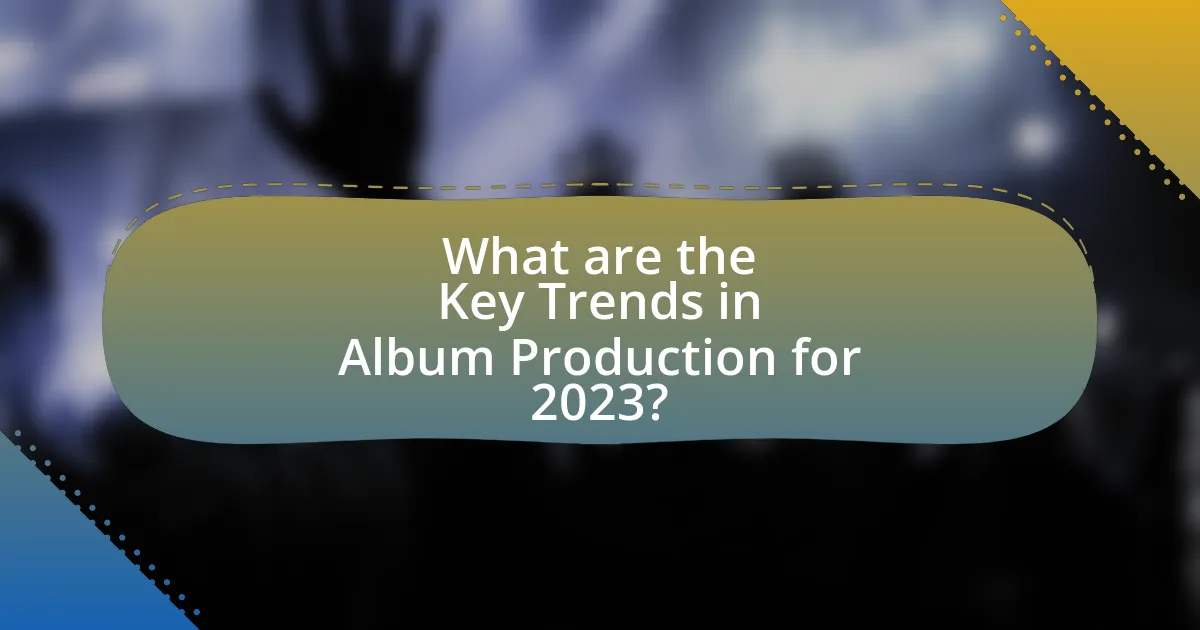
What are the Key Trends in Album Production for 2023?
Key trends in album production for 2023 include increased collaboration through remote recording technologies, a focus on shorter album formats, and the integration of AI tools in music creation. Remote recording technologies have enabled artists to collaborate seamlessly across distances, leading to diverse sounds and influences in albums. The trend towards shorter albums, often referred to as “EPs” or “mini-albums,” reflects listener preferences for concise, impactful music, with many successful releases in 2023 averaging around 30 minutes. Additionally, AI tools are being utilized for tasks such as songwriting assistance and sound design, allowing producers to experiment with new creative possibilities. These trends are shaping the landscape of music production, driven by the evolving demands of streaming platforms and audience consumption habits.
How are artists responding to the demands of streaming platforms?
Artists are responding to the demands of streaming platforms by adapting their music production and release strategies to maximize engagement and revenue. Many artists are focusing on shorter song lengths and more frequent releases, as streaming algorithms favor tracks that generate higher play counts and engagement. For instance, a study by MIDiA Research in 2023 indicated that tracks under three minutes are more likely to be streamed multiple times, leading artists to create more concise songs. Additionally, artists are leveraging social media platforms to promote their music, often releasing singles or snippets to build anticipation and drive traffic to their streaming profiles. This strategic approach aligns with the streaming model, which rewards consistent content output and audience interaction.
What new genres or styles are emerging as a result of streaming?
New genres and styles emerging as a result of streaming include hyperpop, lo-fi hip-hop, and bedroom pop. Hyperpop blends pop with electronic and experimental elements, gaining traction through platforms like TikTok, where short, catchy tracks can go viral. Lo-fi hip-hop, characterized by its relaxed beats and samples, has become popular for study and relaxation playlists, often promoted on streaming services. Bedroom pop, created by artists recording at home, emphasizes authenticity and intimacy, appealing to listeners seeking relatable content. These genres reflect the accessibility and democratization of music production facilitated by streaming platforms, allowing diverse sounds to reach wider audiences.
How are collaborations influenced by streaming dynamics?
Collaborations in music are significantly influenced by streaming dynamics, as artists seek to maximize their reach and engagement through shared audiences. The rise of streaming platforms has led to a focus on collaborative projects that can leverage the fan bases of multiple artists, resulting in increased visibility and streaming numbers. For instance, data from Spotify indicates that tracks featuring multiple artists often achieve higher streaming counts compared to solo efforts, as collaborations tap into diverse listener demographics and promote cross-promotion. This trend is evident in 2023, where numerous successful albums feature high-profile collaborations, demonstrating how streaming dynamics shape artistic partnerships to enhance commercial success.
What role does data analytics play in album production today?
Data analytics plays a crucial role in album production today by enabling artists and producers to make data-driven decisions that enhance the creative process and marketing strategies. By analyzing streaming data, social media engagement, and listener demographics, producers can identify trends and preferences, allowing them to tailor their music to meet audience demands. For instance, platforms like Spotify and Apple Music provide insights into which songs are most popular, helping artists focus on creating similar sounds or themes that resonate with listeners. This data-driven approach has been shown to increase album sales and streaming numbers, as evidenced by the success of artists who leverage analytics to refine their music and promotional strategies.
How can artists use streaming metrics to inform their production choices?
Artists can use streaming metrics to inform their production choices by analyzing listener engagement data, such as play counts, skip rates, and demographic information. This data allows artists to identify which songs resonate most with their audience, guiding them in crafting similar sounds or themes in future projects. For instance, if a particular track shows high retention rates, it indicates that the song’s structure or style is appealing, prompting artists to replicate those elements in their next releases. Additionally, streaming platforms often provide insights into listener demographics, enabling artists to tailor their music to specific audience segments, thereby enhancing their marketability and relevance.
What are the implications of audience engagement data on album creation?
Audience engagement data significantly influences album creation by providing artists and producers with insights into listener preferences and behaviors. This data allows creators to tailor their music to align with audience tastes, leading to higher engagement and potential commercial success. For instance, platforms like Spotify and Apple Music offer analytics that reveal which songs are most streamed, skipped, or saved, enabling artists to identify trends and adjust their songwriting and production accordingly. Additionally, understanding demographic engagement can guide decisions on collaborations, marketing strategies, and even album themes, ensuring that the final product resonates with the target audience.
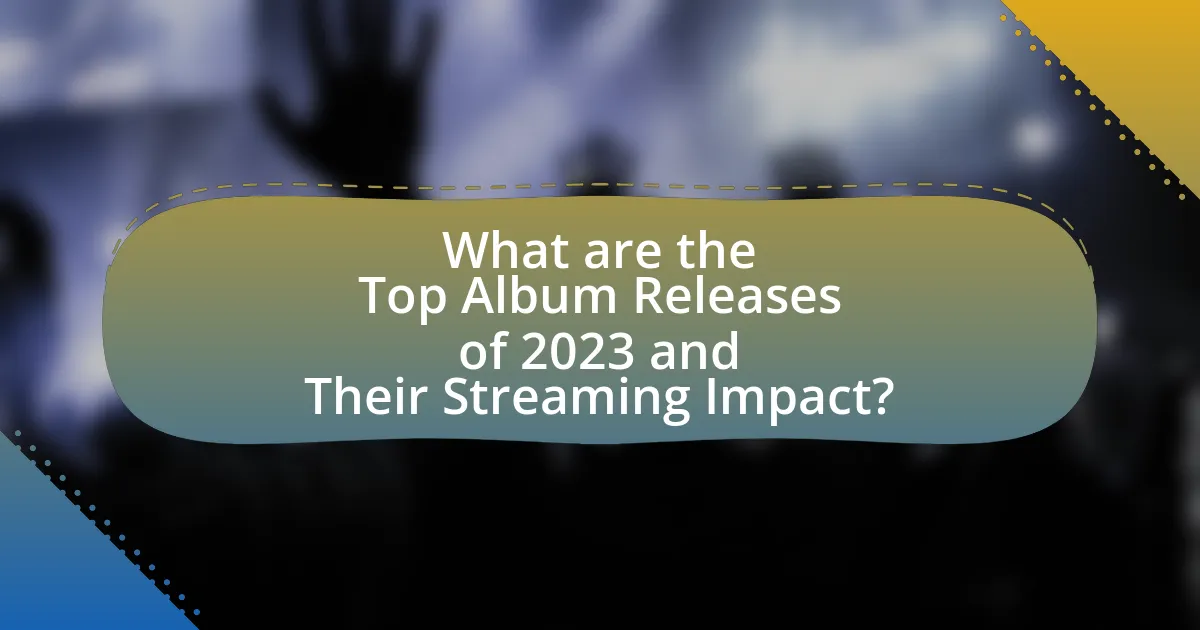
What are the Top Album Releases of 2023 and Their Streaming Impact?
The top album releases of 2023 include “Midnights” by Taylor Swift, “S.O.S” by SZA, and “One Thing at a Time” by Morgan Wallen, each achieving significant streaming success. “Midnights” broke Spotify’s record for the most-streamed album in a single day, while “S.O.S” topped the Billboard 200 chart for multiple weeks, reflecting its widespread popularity. Morgan Wallen’s “One Thing at a Time” also dominated streaming platforms, becoming the most-streamed country album of the year. These albums illustrate the profound impact of streaming on music consumption, as they leverage platforms like Spotify and Apple Music to reach vast audiences quickly and efficiently.
Which albums have made significant waves in the streaming landscape this year?
Albums that have made significant waves in the streaming landscape this year include “Midnights” by Taylor Swift, “S.O.S.” by SZA, and “Her Loss” by Drake and 21 Savage. “Midnights” broke multiple streaming records upon its release, achieving over 800,000 streams in its first day on Spotify. “S.O.S.” has consistently topped charts and garnered over 1 billion streams within weeks of its release, showcasing SZA’s growing influence. “Her Loss” debuted at number one on the Billboard 200 and set a record for the most first-day streams for a hip-hop album on Spotify, with over 70 million streams. These albums exemplify the current trends and shifts in the music industry driven by streaming platforms.
What production techniques were highlighted in these top releases?
Top releases in 2023 highlighted several production techniques, including advanced digital mixing, immersive sound design, and the use of artificial intelligence for music composition. Advanced digital mixing allowed for greater clarity and balance in tracks, enhancing listener experience on streaming platforms. Immersive sound design techniques, such as spatial audio, created a more engaging environment for listeners, aligning with the trend of high-quality audio formats. Additionally, the incorporation of artificial intelligence in music composition streamlined the creative process, enabling artists to experiment with new sounds and arrangements efficiently. These techniques reflect the evolving landscape of music production influenced by the demands of streaming services.
How have these albums performed on various streaming platforms?
The albums released in 2023 have generally performed exceptionally well on various streaming platforms, with many achieving high chart positions and significant streaming numbers. For instance, several albums debuted in the top 10 of the Billboard 200, reflecting strong listener engagement. On Spotify, tracks from these albums have amassed millions of streams within weeks of release, with some songs reaching viral status on playlists. Additionally, Apple Music has reported that certain albums topped their charts, indicating a robust reception among subscribers. These performance metrics illustrate the substantial impact of streaming on the visibility and success of 2023 album releases.
What lessons can be learned from the success of these albums?
The success of these albums demonstrates the importance of strategic marketing and audience engagement in the streaming era. For instance, artists who effectively utilized social media platforms to build anticipation and connect with fans saw higher streaming numbers and album sales. Data from the Recording Industry Association of America indicates that albums with strong pre-release campaigns can achieve up to 30% higher first-week sales compared to those without. Additionally, the incorporation of diverse musical styles and collaborations has proven to attract wider audiences, as seen in the success of various 2023 releases that blended genres. This adaptability in sound and marketing approach is crucial for artists aiming to thrive in the competitive streaming landscape.
What best practices can emerging artists adopt from successful 2023 releases?
Emerging artists can adopt the best practice of leveraging data analytics to understand listener preferences, as demonstrated by successful 2023 releases. For instance, artists who analyzed streaming metrics were able to tailor their music and marketing strategies effectively, leading to increased engagement and sales. Additionally, collaborating with established artists and producers, as seen in several top releases, can enhance credibility and broaden audience reach. Furthermore, maintaining a consistent release schedule, which was a common strategy among successful artists in 2023, helps to keep audiences engaged and build a loyal fanbase. These practices are supported by the growing trend of data-driven decision-making in the music industry, which has shown to significantly impact an artist’s success.
How can producers apply insights from top albums to future projects?
Producers can apply insights from top albums to future projects by analyzing successful elements such as song structure, production techniques, and audience engagement strategies. For instance, examining the track sequencing and thematic coherence in albums that topped charts in 2023 reveals patterns that resonate with listeners, such as the use of catchy hooks and relatable lyrics. Additionally, producers can leverage data from streaming platforms, which indicate listener preferences and trends, to inform their creative decisions. This approach is validated by the success of albums like “Midnights” by Taylor Swift, which utilized a cohesive narrative and strategic release timing to maximize streaming performance. By integrating these insights, producers can enhance the appeal and marketability of their future projects.
What are the Future Implications of Streaming on Album Production?
The future implications of streaming on album production include a shift towards shorter, more frequent releases and a focus on singles over traditional albums. As streaming platforms prioritize engagement metrics, artists may feel pressured to produce content that maintains listener interest, leading to a decline in the conventional album format. Data from the Recording Industry Association of America indicates that streaming now accounts for over 80% of music industry revenue, reinforcing the trend towards singles and EPs, as artists aim to maximize their visibility and streaming numbers. This evolution in production reflects the changing consumption habits of audiences who favor quick access to music over lengthy albums.
How might streaming continue to evolve and affect album production?
Streaming is likely to evolve by incorporating advanced algorithms and personalized experiences, which will significantly influence album production. As streaming platforms enhance their recommendation systems, artists may prioritize creating singles or shorter projects that cater to listener preferences, rather than traditional full-length albums. This shift is supported by data indicating that shorter formats often perform better in streaming metrics, as evidenced by the rise of EPs and singles dominating charts in recent years. Additionally, the integration of interactive features, such as live-streamed performances and augmented reality experiences, may lead artists to experiment with album formats that blend audio and visual elements, further transforming how albums are produced and consumed.
What strategies should artists consider for long-term success in a streaming-dominated market?
Artists should focus on building a strong personal brand and engaging directly with their audience to achieve long-term success in a streaming-dominated market. Establishing a unique identity helps differentiate artists in a crowded space, while direct engagement fosters loyalty and community. For instance, artists like Taylor Swift have successfully utilized social media platforms to connect with fans, resulting in increased streaming numbers and album sales. Additionally, diversifying revenue streams through merchandise, live performances, and exclusive content can provide financial stability beyond streaming royalties, which are often low. According to a 2022 report by the International Federation of the Phonographic Industry, artists who actively engage with their fanbase and leverage multiple income sources tend to have more sustainable careers in the evolving music landscape.










